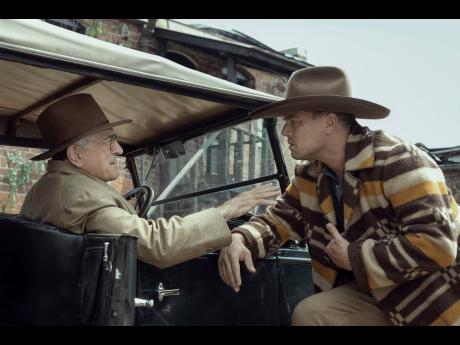‘Killers of the Flower Moon’ – A tense exploration of evil
Chronicling the brutal string of murders that plagued the Osage people in the 1920s, Killers of the Flower Moon had no choice but to be bleak. The characters in the film range from prey to predator, finding themselves somewhere on that spectrum. Some victims display far more cunning than the manipulative forces that surround them can see. Others have no hope as they count on the kindness of depraved men. To that end, Killers of the Flower Moon is a film about the blindness of evil people, whether wilful or otherwise.
Wolves in sheep’s clothing populate the film, sometimes fooling themselves of their disguise. Robert De Niro is the film’s most overt villain, sharing his duplicitous nature with the audience. He smiles with the Osage people, speaking their language, building up their community, all the while plotting their demise with his like-faced brethren. In a sense you feel his character William Hale, with his constant invoking of the good God above, doesn’t see his actions as villainous. He is destiny manifested, a devilish eventuality that is decreed by nature itself.
The self-delusion extends to his nephew, Leonardo Dicaprio’s Ernest Burkhart. His hapless idiocy lends itself to sympathy, but beneath such a façade is a mindset just as deplorable as his uncle. His campaign to bed and wed a young Osage bachelorette is defended as an act of love, with the attractive side effect of gaining access to her considerable estate. Even as Ernest takes steps to eradicate his spouse’s family, he maintains a sense of innocence. Ernest represents the danger of wilful ignorance, creating as much harm as those who are more blatantly devious.
His crusade of kindness unfortunately passes the test with Lily Gladstone’s Molly. A character who constantly has her wits about her, yet is herself shown to be a victim all the same. The film focuses so much on the actions of the oppressors, it spends time away from the lives of the victims themselves. By the second half of the movie, the force of Molly is all but naught, crippling the film’s impact. It loses not just an important perspective, but the compelling performance of Gladstone.
The film may have been better served exploring its less prominent elements - the beautiful landscapes and the strong sense of community in the Osage. In telling the story of the murders, Killers of The Flower Moon excels in creating a tense atmosphere. The plot propels forward, simmering slowly until the pot of greed boils over.
In the end, its monstrous characters are painted as such, but sitting with them starts to feel overwhelming. Where the film left me wanting more, history no doubt creates restrictions, especially when the intention is to be authentic. Then again, it is a film after all, and creative licence is always to be encouraged, in favour of good storytelling.
Rating: Big Screen Watch
Damian Levy is a film critic and podcaster for Damian Michael Movies.

